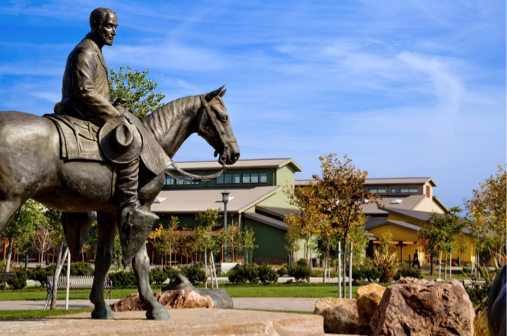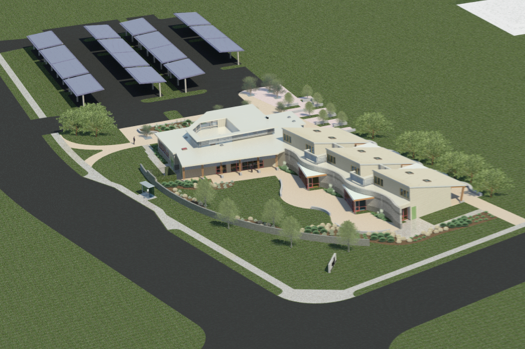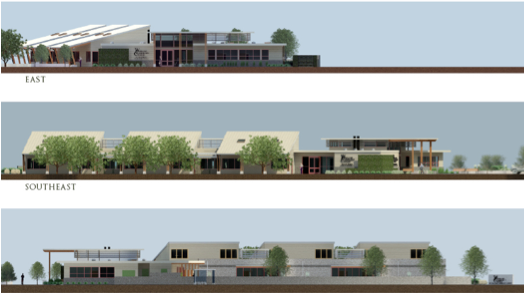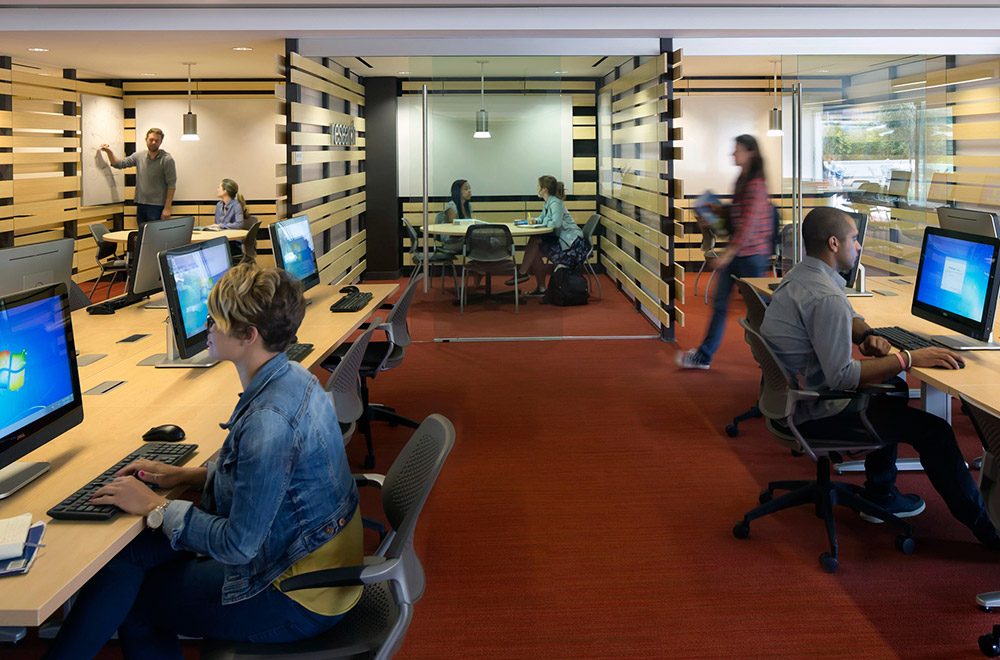By Helen Bronston
Recently, two clients have asked us the same question: how will we make a building where everybody will feel welcome? And by everybody, they meant EVERYBODY—all ages, cultural backgrounds, levels of ability and disability, sociability and individuality. Both projects were focused on community: one was for the City of Los Banos Community Center, the other for Woodland Community College’s Colusa County Outreach Facility.

Los Banos Community Center – Henry Miller Plaza
Initially, this challenging question threw us for a loop. How would we begin to approach this goal? How would we do it in an aesthetically and intellectually defensible way, ensuring that our architectural instincts were satisfied as well as our client’s desires? We did not find many good precedents in the architectural literature, because architectural culture has largely been dominated by the cult of personality, “starchitecture,” that demands that an architect practice and sell a recognizable style, no matter whether it is appropriate to the problem at hand.
We have been lucky to have clients who did not view appealing to their intended audiences as a form of pandering—the appeal of the commercial strip, “bling,” or surface appeals to identity—but instead as a deeper form of connection.
So what did we do? First, we had in-depth meetings with our clients and their constituents so that we could begin to understand their culture and expectations. Our next decision was to call upon common experience—especially common experiences from their rural built environment—rather than essentialized ethnic or cultural origins and types when making design decisions. Finally, we gave each project a unique presence of its own, an unforeseen quirk, or unprogrammed amenity that would inspire emotional attachment.

Colusa County Outreach Facility – Overview

Colusa County Outreach Facility – Elevations
The Los Banos Community Center and the Colusa County Outreach Facility are now built and open to the public, serving their communities. We believe that they have been well received, but it is now our responsibility to ask: did our strategy really succeed? How has our work been experienced by our clients and how is it perceived by the intended communities? Has our work contributed to creating a cohesive, understanding, and respectful community? Or has it created divisions, fed base instincts, or unjustly excluded groups of people? Or—possibly worse—has it unintentionally reinforced that the world will continue as usual, confirming the low expectations of a region and a population that have faced difficult times?
As architects, we have the privilege of making things that help define the world for other people. With this comes the responsibility to remain in doubt, do our best, and keep striving for better.
